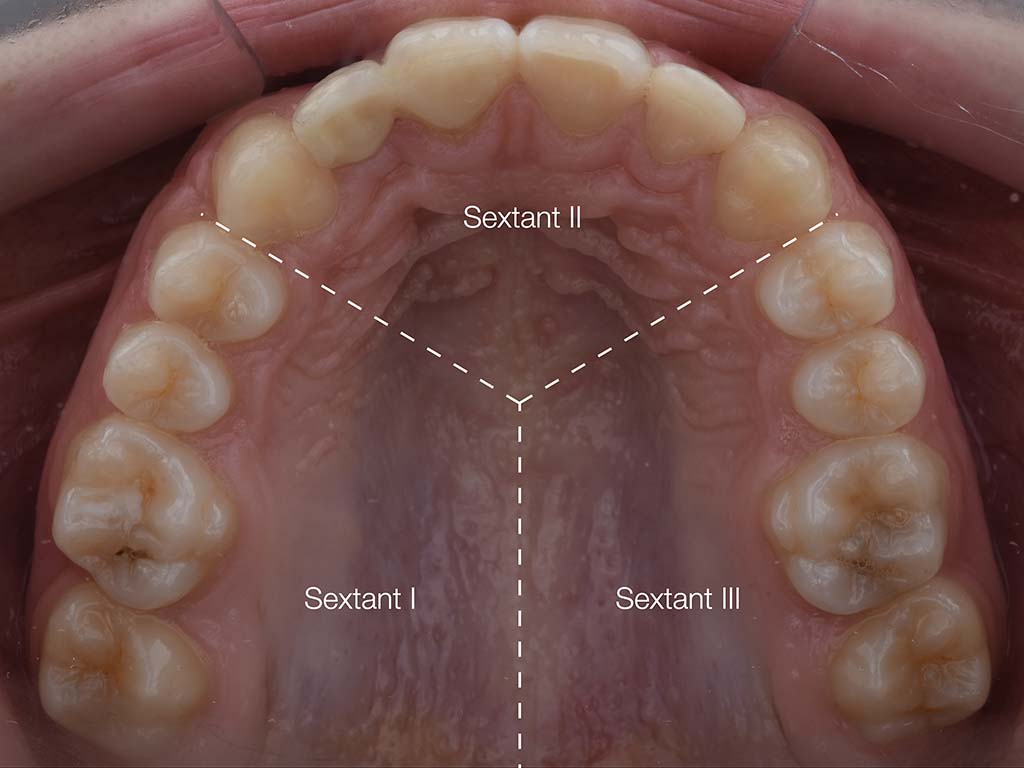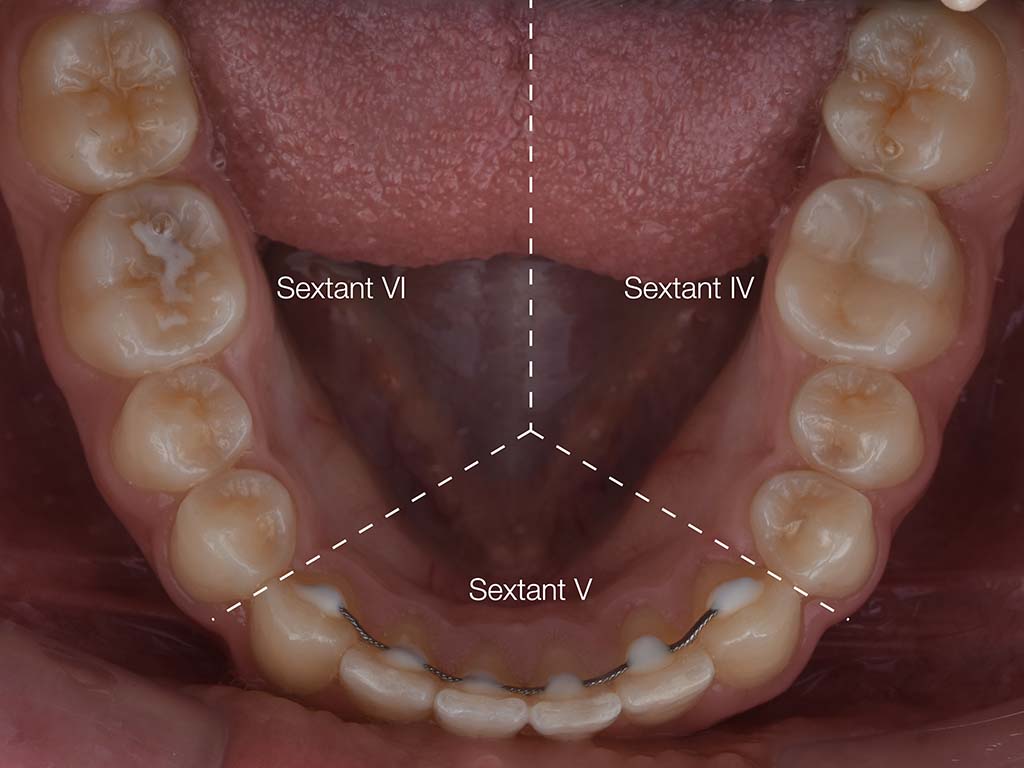WHO probe
Assessment instruments
WHO probe
World Health Organisation (WHO) probe is a slender instrument used for assessment. It has unique design that enables fast identification of periodontal involvement. It is used for screening purposes and registration of periodontal screening indices such as Community Periodontal Index of Treatment Needs CPITN/Periodontal Screening and Recording (PSR) Index/ Basic Periodontal Examination (BPE).
PSR (Periodontal Screening Recording) Index
The PSR is a simple screening tool that is used to indicate basic guidance on further diagnostic and treatment need. It has been introduced by the American Dental Association & American Academy of Periodontology, as a modification of CPITN.
Even though PSR and CPITN systems may be useful for screening purposes, scores are not diagnostic since neither system measures clinical attachment levels.
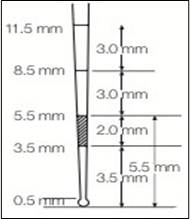
How to record PSR in adult?
Step I
Divide dentition into sextants
The dentition is divided into 6 sextants: two anterior and four posterior sextants.
All teeth in each sextant are examined. For a sextant to qualify for recording, it must contain at least 2 teeth. If teeth in the sextant are missing or if only one tooth is present, then sextant is assigned “X”. If the sextant has only one functional tooth, it is included in the preceding sextant.
Step II
Probing with WHO probe
Light probing force should be used. The probe should be “walked around” the sulcus/pockets in each sextant, and the highest score recorded. Each tooth in a sextant is probed at six different sites: mesio-buccal, mid-buccal, disto-buccal and the corresponding lingual and palatal sites.
Each tooth is scored from Code 0 to Code 4, only the highest score/code of the sextant is recorded.
As soon as a code 4 is identified in a sextant, the clinician may then move directly on to the next sextant, though it is better to continue to examine all sites in the sextant. This will help to gain a fuller understanding of the periodontal condition. If a code 4 is not detected, then all sites should be examined to ensure that the highest code in the sextant is recorded before moving on to the next sextant.
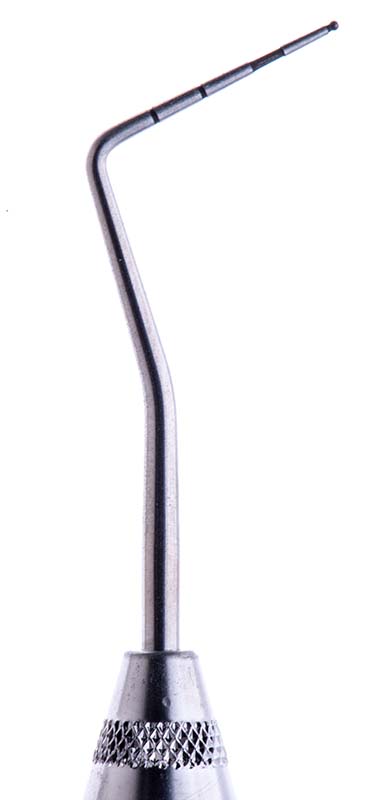
WHO – screening probe
Ball ended tip (0.5mm diameter)
Black coloured band extends 3.5-5.5mm
Periodontal screening purposes only!
WHO probe
Step III
Scoring codes
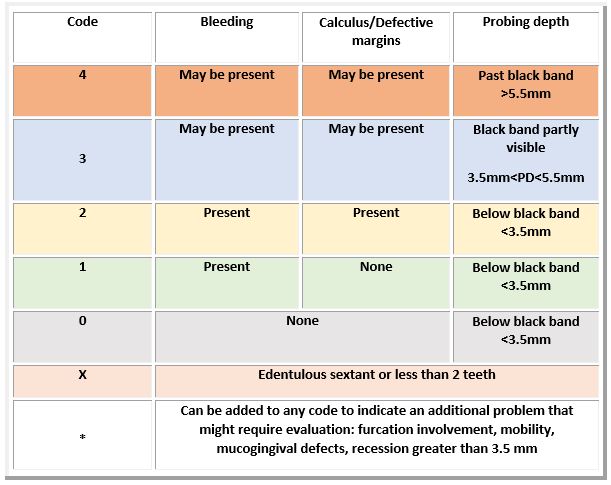
An example of PSR score grid:
Date: dd/mm/yy
| X | 2 | 3 |
| 1 | 0 | 4* |
Step IV
Interpretation of PSR scores
Once PSR codes are recorded they should be interpreted according to the table below.
The highest code is used to interpret the results and plan the further assessment or therapy.
| 0 | No need for periodontal therapy |
| 1 | Oral hygiene instructions (OHI) |
| 2 | OHI, removal of plaque retentive factors, including all supra- and subgingival calculus |
| 3 |
Comprehensive periodontal assessment (6-point chart & radiograms). |
| 4 |
When to record the PSR?
All new patients should have the PSR recorded.
For patients with codes 0, 1 or 2, the PSR should be recorded at least once a year.
For patients with PSR codes of 3 or 4, more detailed periodontal charting is required.
Code 3: If code 3 is detected in one sextant only while the rest of the sextants have codes 0, 1 or 2, record full charting in the sextant where the code 3 was recorded. If code 3 is detected in more than one sextant, then full mouth charting is necessary.
Code 4: if there is a code 4 in any sextant, then full mouth chart is mandatory to record.
Landry RG & Jean M. Periodontal Screening and Recording (PSR) Index: precursors, utility, and limitations in a clinical setting. International Dental Journal 2002;52:35-40.
